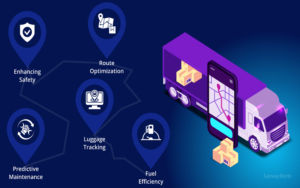How to Make Software Audits Easy for Your Business
3 min read
For businesses using software from major vendors like Microsoft, Oracle, IBM and others, licensing audits are an inevitable reality. These vendors want to ensure their intellectual property is being properly tracked and paid for. While audits can be disruptive and costly if mishandled, a little proactive preparation goes a long way when it comes to making the process much smoother.
Understanding Software Licensing Rules
The first step in getting audit-ready is developing a clear understanding of each vendor’s licensing rules and requirements. The terms can be complicated, with licensing determined by metrics like per-user, per-device, or other factors. Misinterpreting the fine print frequently leads to being out of compliance, whether unintentionally or not.
Many businesses look for Oracle licensing audit defense and expertise from third-party providers such as Miro Consulting who are well-versed in the database giant’s famously complex product use rights. These specialists ensure customers have the proper, cost-efficient licensing for their Oracle software deployments.
Having a firm grasp on what is allowed according to your licensing agreements lets you to properly track usage data that will be requested during audits. It also helps avoid difficult “true-up” costs for any out-of-compliance licensing after audits.
Establishing Software Management Policies
With an understanding of vendor licensing rules, companies should establish formal policies and procedures for governing software usage and ownership. This provides the enforcement and accountability needed to maintain compliance.
For example, policies should prohibit unbridled software installation by employees and require them to get approval first from the IT department. Approved software gets input into a central inventory management database detailing all licenses owned.
The policies should also mandate meticulous record-keeping, such as documenting proof of licenses by keeping invoices and purchase orders. Keeping employee records is also wise, connecting software licenses to specific users if per-user licensing applies.
Having a central software inventory combined with rigorous usage tracking makes it easy to quickly produce an accurate audit trail when vendors come knocking.
Deploying Inventory Tools
While complex for larger enterprises, even smaller businesses can benefit from dedicated software asset management tools for streamlining audit preparation. These applications automate labor-intensive processes like:
- Performing a comprehensive sweep to discover all software installed across the network.
- Collecting detailed usage statistics based on licensing rules.
- Mapping software deployments to purchased licenses to identify deficits.
- Generating reports showcasing proof of license ownership and compliance.
For organizations spread across multiple locations or with bring-your-own-device policies, these tools are indispensable for maintaining oversight of software access points. The automated inventory process ensures nothing slips through the cracks.
When auditors request licensing records, these inventory tools allow companies to quickly and accurately present the required proof.
Auditing Your Own Deployment
A final key tactic is periodically self-auditing your software deployment and reconciling it against purchased licenses. Carefully inspect each application’s licensing terms and verify usage complies, treating it like a practice run for vendor audits.
This proactive self-policing allows companies to identify and resolve any licensing gaps before receiving audit notifications. It’s much easier to address shortfalls on your own terms rather than scrambling under auditor pressure.
If necessary, work with software resellers to purchase any additional licensing needed to achieve full compliance. The costs may sting, but it beats stiff auditor-imposed penalties for under-licensing.
Partnering with specialists offering licensing audit support can provide invaluable guidance too. Their insights simplify interpreting convoluted rules while optimizing licensing for cost-efficiencies.
Conclusion
Software audits do not have to induce panic and disruption when businesses implement the proper management protocols. Truly understanding licensing terms, deploying inventory tools, and routinely self-auditing allows organizations to maintain meticulous compliance records. With this approach, they can confidently and quickly produce comprehensive reports keeping auditors satisfied.





